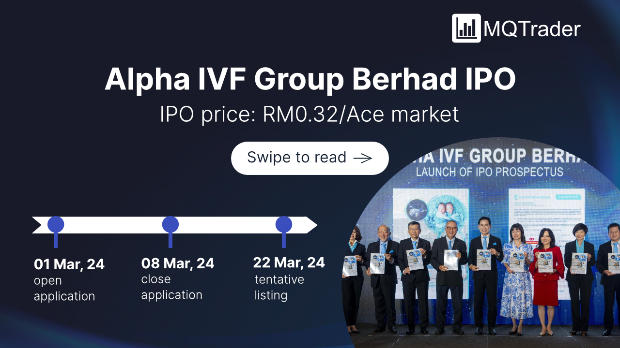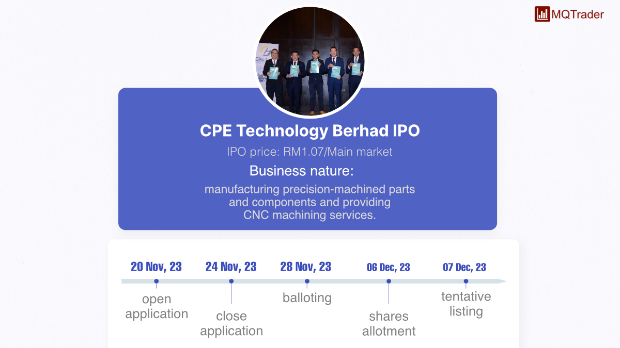5 in 5 With Japfa - Growing Towards Mutual Prosperity
MQ Trader
Publish date: Tue, 02 Apr 2024, 05:39 PM
Company Overview
Japfa is a leading integrated agri-food group in Asia dedicated to feeding millions of people with essential animal proteins, namely poultry, swine, aquaculture and beef, and protein-based consumer products. Headquartered in Singapore, Japfa employs more than 37,000 people across an integrated network of modern farming, processing and distribution facilities in Indonesia, Vietnam, Myanmar, India and Bangladesh, embracing an integrated industrial approach to livestock and food production across the entire value chain. Link to Stock Screener company page.
1. What are some of the key highlights in Japfa’s latest Sustainability Report?
- In 2023, we made further progress on action plans, data collection and analysis to improve impact assessment and decisionmaking.
- We also refined our capital commitment system to better monitor capital investments and expenditures linked to our sustainability initiatives. 2 April 2024
- We initiated a Life Cycle Assessment (LCA) for our swine operations in Vietnam that will help to identify key hotspots in our swine value chain and help us to focus on areas of improvement.
- We included a full chapter on Task Force on Climate-related Financial Disclosures (TCFD) in our 2023 Sustainability Report, setting out a roadmap towards achieving our targets and updates on action plans and progress development.
- Our Japfa for Kids programme, which aims at improving nutrition of primary school children, in 2023 successfully lifted 1,311 students to well-nourished status from malnourished/undernourished.
2. How has Japfa’s sustainability approach been integrated into its business operations?
- Our sustainability efforts go hand in hand with the United Nations Sustainable Development Goal 2 (UN SDG2): Zero Hunger.
o We operate in markets where food security is still an issue. Over 40% of the 3.1 billion people worldwide who are unable to afford a healthy diet live in the countries that Japfa operates in – Indonesia, Vietnam, Myanmar, India and Bangladesh. This is reflected by the level of chicken consumption per capita, which is less than 10kg in Indonesia as compared to over 40kg in Malaysia.
- Today, Japfa supplies about 20-25% of staple proteins in many of the countries we operate in. As a leading efficient and low-cost protein producer, we can improve the diet of millions people by providing nutritious and affordable protein foods while promoting sustainable practices.
- Our sustainability efforts go hand in hand with the United Nations Sustainable Development Goal 2 (UN SDG2): Zero Hunger.
o We operate in markets where food security is still an issue. Over 40% of the 3.1 billion people worldwide who are unable to afford a healthy diet live in the countries that Japfa operates in – Indonesia, Vietnam, Myanmar, India and Bangladesh. This is reflected by the level of chicken consumption per capita, which is less than 10kg in Indonesia as compared to over 40kg in Malaysia.
- Today, Japfa supplies about 20-25% of staple proteins in many of the countries we operate in. As a leading efficient and low-cost protein producer, we can improve the diet of millions people by providing nutritious and affordable protein foods while promoting sustainable practices.
3. As a producer of staple animal proteins, how does Japfa manage the use of energy and resources?
- Japfa has set ambitious sustainability targets in 2022, focusing on resource efficiency and waste reduction throughout our production process. Our approach focuses on an Efficient Production System, which is one of our sustainability pillars, with efforts in different areas.
- We leverage genetic selection, optimal nutrition, and modern farming practices. For example, with optimal nutrition for our livestock, we can promote their health and improve productivity, with benefits in term of use of resources.
- Large-scale, standardised operations, economies of scale, and local sourcing of raw materials (where feasible) are also key features. We integrate technology at every stage of production to optimise energy and resource utilisation, reducing our environmental footprint.
- Leveraging our vertically-integrated business model, we unlock the full potential of our value chain, making essential staples accessible. Our efficient production system is not just a strategy—it's a lifeline, delivering nutritious protein staples while protecting the future of our planet.
4. The Group secured its first Sustainability-Linked Bond (SLB) in FY2022. Can you elaborate more on its key performance indicators?
- Issued by our subsidiary PT Japfa Indonesia Tbk, our Sustainability-Linked Bond (SLB) was the first of its kind in the agri-food industry globally and the first US$-denominated SLB issuance from Southeast Asia.
- The SLB is pegged to Sustainability Performance Targets (SPTs) linked to wastewater treatment and recycling to improve water circularity and reduce water withdrawal. The SPTs were established after conducting an environmental Life Cycle Assessment (LCA) of our poultry operations in Indonesia. The SPTs were assessed as “Robust” by Vigeo Eiris (V.E.), an affiliate of Moody’s ESG Solutions. The LCA identified water, wastewater, and the use of water as areas of improvement.
- We are planning to build 9 water recycling plants by 31 December 2024 for the SLB – to date, we have already completed 8 facilities and are on track to meet the SLB targets.
5. What are Japfa’s future plans to further enhance its ESG data and disclosure practices? Which ESG Reporting Technologies Has Japfa Adopted in Recent Years?
- Our Japfa Sustainability Reporting System (JSRS) was built as a collaborative project between Human Resource and Information Technology departments. The JSRS is set up an in-house database system to collect and track human resource and sustainability data, such as energy, waste, water and employee metrics. To-date, JSRS covers more than 350 reporting units across the group, with further expansion of coverage and scope being planned.
- We will focus on enhancing the JSRS and data cleansing in the next phase, to create a reliable digital database with analytics, that will provide tools for assessment and decision-marking.
- In addition, we’ve introduced a user-friendly dashboard to facilitate efficient management oversight and streamline the tracking of sustainability metrics.
- Appropriate Persons-in-Charge (PICs) were appointed in the operating units across the group to oversee the data collection and verification to further enhance data integrity. The PIC structure will significantly improve the timeliness and accuracy of the data collected.
More articles on SG Market Dialogues
Created by MQ Trader | Jul 17, 2024
Created by MQ Trader | Jul 09, 2024
Created by MQ Trader | Jun 26, 2024
Created by MQ Trader | Jun 19, 2024
Created by MQ Trader | Jun 11, 2024
Created by MQ Trader | Jun 10, 2024
Created by MQ Trader | Jun 05, 2024
Created by MQ Trader | May 29, 2024





















